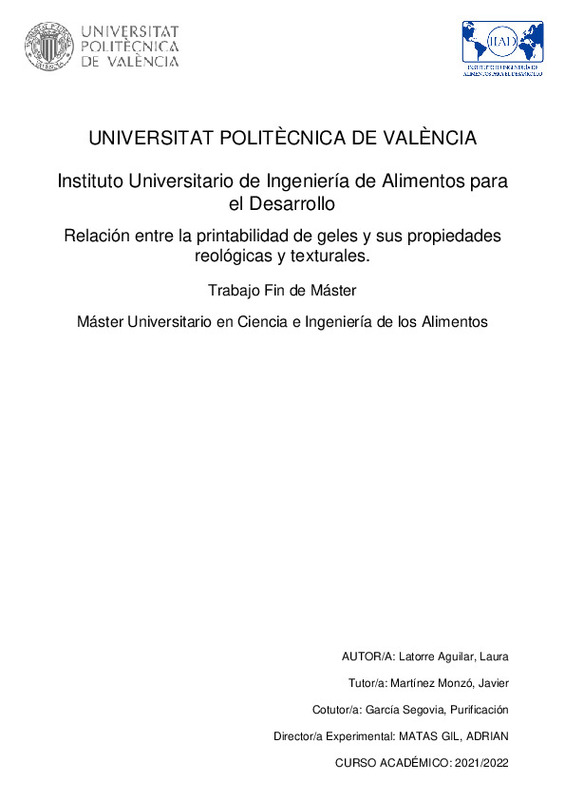JavaScript is disabled for your browser. Some features of this site may not work without it.
Buscar en RiuNet
Listar
Mi cuenta
Estadísticas
Ayuda RiuNet
Admin. UPV
Relación entre la printabilidad de geles y sus propiedades reológicas y texturales
Mostrar el registro completo del ítem
Latorre Aguilar, L. (2022). Relación entre la printabilidad de geles y sus propiedades reológicas y texturales. Universitat Politècnica de València. http://hdl.handle.net/10251/188133
Por favor, use este identificador para citar o enlazar este ítem: http://hdl.handle.net/10251/188133
Ficheros en el ítem
Metadatos del ítem
| Título: | Relación entre la printabilidad de geles y sus propiedades reológicas y texturales | |||
| Otro titulo: |
|
|||
| Autor: | Latorre Aguilar, Laura | |||
| Director(es): | ||||
| Entidad UPV: |
|
|||
| Fecha acto/lectura: |
|
|||
| Resumen: |
[EN] 3D printing of food is present in many sectors, although there is great interest
within the food industry, an example of this is personalized nutrition or the use
of food biomaterials. It is convenient to know the ...[+]
[ES] La impresión 3D de alimentos está presente en muchos sectores, aunque se produce un gran interés dentro de la industria alimentaria, un ejemplo de ello es la nutrición personalizada o el uso de biomateriales alimentarios. ...[+]
|
|||
| Palabras clave: |
|
|||
| Derechos de uso: | Reserva de todos los derechos | |||
| Editorial: |
|
|||
| Titulación: |
|
|||
| Tipo: |
|
recommendations
Este ítem aparece en la(s) siguiente(s) colección(ones)
-
ETSIAMN - Trabajos académicos [3541]
Escuela Técnica Superior de Ingeniería Agronómica y del Medio Natural







